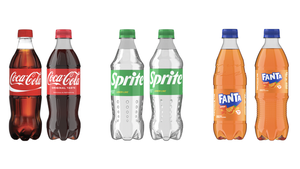“What happened to our demand?” The simple question fielded from a client last fall gave Gary Adams, president of petrochemical consulting firm, Chemical Market Assoc. Inc. (CMAI; Houston), much pause.
June 5, 2009
Visiting with a company in China one month after the Olympics there, Adams understood at that moment the economic slowdown constituted much more than a late-summer post-games malaise. “If you’re not selling resin in September in China, you’re not selling toys in Houston in December,” Adams explained during CMAI’s Global Petrochemical Conference (Houston).
Adams and other presenters laid out the often gruesome details of the global petrochemical industry’s performance in 2008 and at the start of 2009 but stressed that while the slowdown was the worst since the Great Depression, it would not replicate that lost decade. Presenters also emphasized that the bulk of the plastics capacity set to come online over the next few years will still do so, if on a delayed schedule.
Global contractions in PP, PE
How bad did things get in 2008? CMAI reports that chemical and plastics strongholds—ethylene, polyethylene (PE), and polypropylene (PP)—all saw demand contract, even in go-go markets like China. “Never in the history of CMAI’s record keeping [which goes back to 1979] have we recorded a year-over-year drop in China’s PE demand,” said Nick Vafiadis, CMAI’s global director of polyolefins. China actually overtook the U.S. as the top consumer of PE in 2008, but did so as its demand fell by 5%. Worldwide PE demand contracted by 3.9% last year. Vafiadis believes forecast PE demand for Western Europe and North America will not recover to 2007 levels until the 2014-2015 timeframe.
Polypropylene, which also contracted in 2008, is forecast to undergo a “sideways move” in 2009, according to Esteban Sagel, CMAI’s North American polyolefins director. He believes growth will not return until 2011, and at that time, there could be 17 million tonnes of excess capacity—equivalent to 25% of total demand—on the market.
Historical perspective
Arved Teleki, CMAI’s chief economist, who has lived through eight business down cycles, told the audience the downturn is the worst since the Great Depression, and like that one is “globally synchronized,” but he stressed this is not another Great Depression.
Laying out the numbers, Teleki pointed out that while the Great Depression lasted 10 years, the current downturn, by nearly all accounts, will only last for one-and-half to two years; and while employment contracted by more than 20% in the ’30s, unemployment will likely only reach 10% in this instance. “We severely underestimated the violence and the depth of the contraction,” Teleki said, before adding emphatically that, “This is not the second Great Depression.” He also reminded attendees, “The natural state of the world economy is to grow, not contract, and that’s important to remember.”
CMAI and Teleki, which revised all its reporting and forecasting in January when the scope of the downturn became evident, are predicting two or three more down quarters, with this downturn’s “trough” occurring in the third quarter of this year. Teleki believes there will be some recovery starting in the fourth quarter of 2009, but the world won’t get back to pre-down-cycle growth rates until the fourth quarter of 2010. In an alternate forecast, which takes a more negative tack and is less likely to occur, Teleki said the trough wouldn’t come until the first quarter of 2010, with the global economy not regaining the previous peak until a year after that, Q4 2011. In terms of global GDP, CMAI is forecasting a contraction of 2.2% for 2009, an increase of 2.0% in 2010, and growth ranging from 3.1-3.7% in 2011.
Nothing exceeds like excess
Given the weaker overall economic performance, Adams said inventories for key chemicals like ethylene and propylene, as well as their polymer derivatives, will be out of whack for some time. “It may well be the most over-supplied market that has emerged since the early ’80s,” Adams said, adding that surpluses could reach levels representing 14-16% of the market. Surplus levels could be around for some time, with 50 million tonnes of production needed to be removed and balance not returning until the 2012-2013 time frame: “Higher-cost capacity will have to be closed in the U.S., Western Europe, and North East Asia.”
Regardless of global supply dynamics, Teleki said that governments all around the globe are doing everything they can to stoke demand, acting most aggressively via monetary policy—another key difference between 2008-2009 and 1929-1930.
The Group of 7 all have cut interest rates, and in terms of direct fiscal stimulus, Teleki said $6 trillion in total has been pledged, with $2 trillion from the U.S., $2.5 trillion from other developed countries, and $1.5 trillion from developing nations. In addition, Teleki said the precipitous price drop in commodities has acted like a “tax cut,” with a total, global benefit between $1-$2 trillion. —[email protected]
About the Author(s)
You May Also Like


